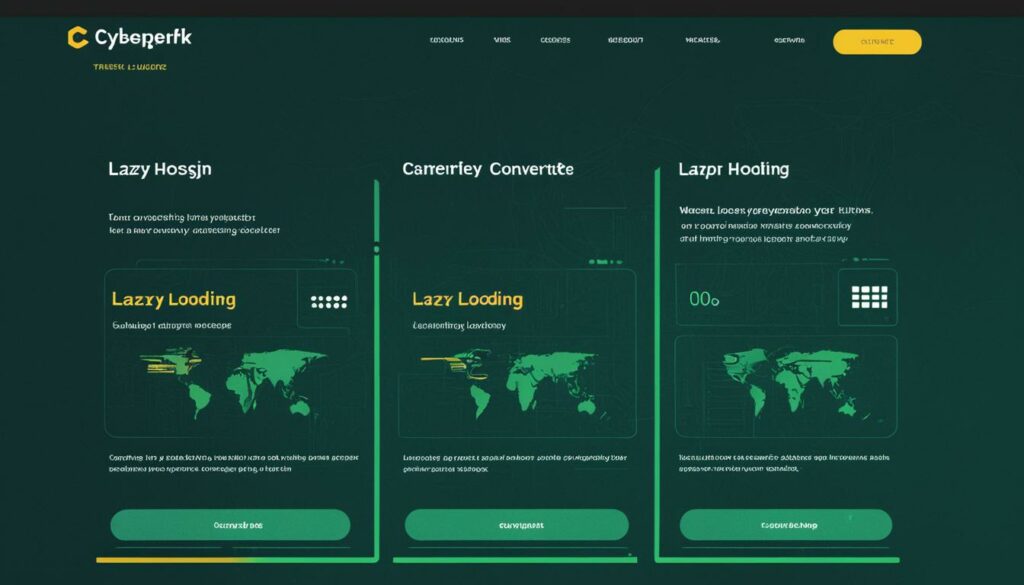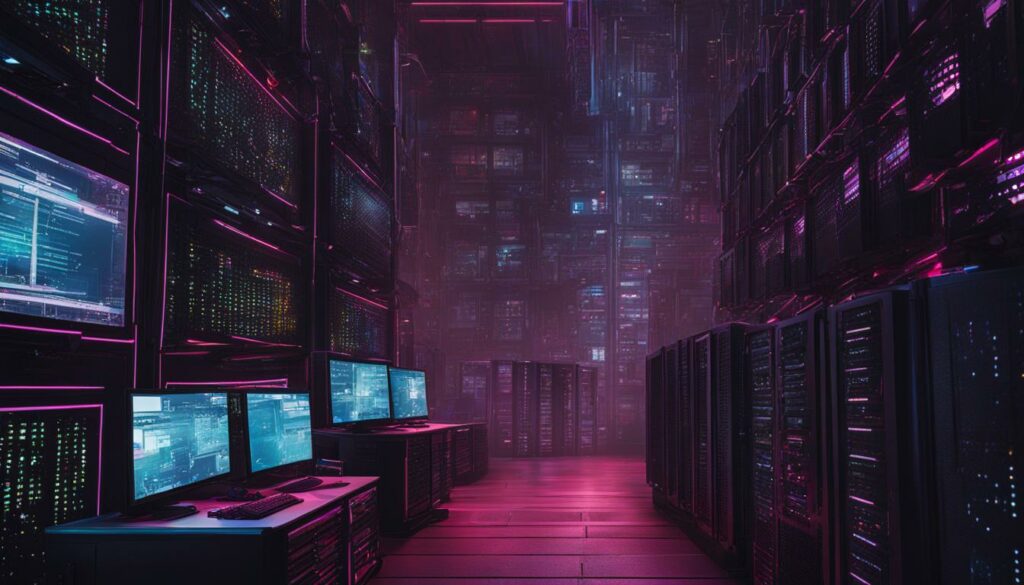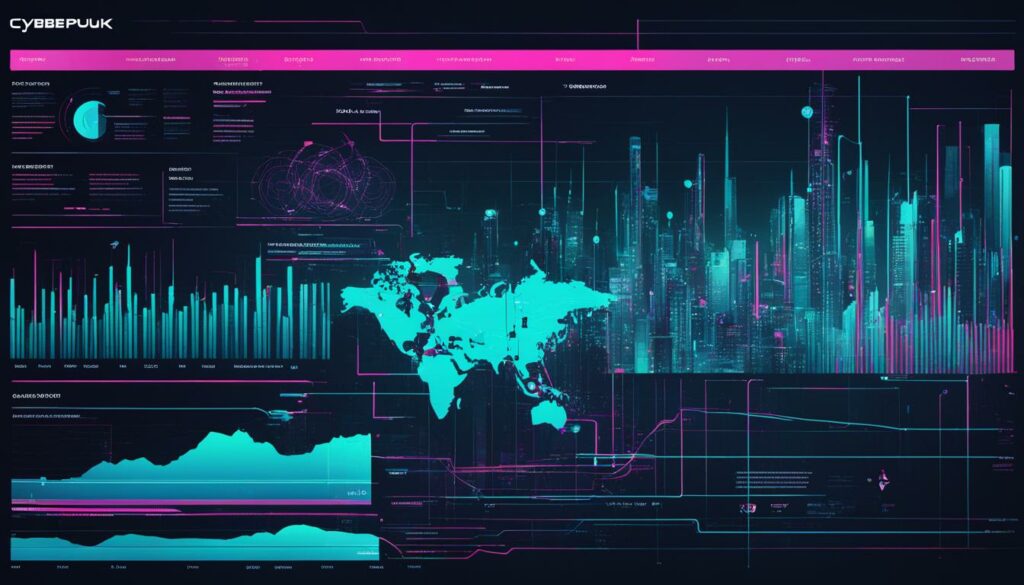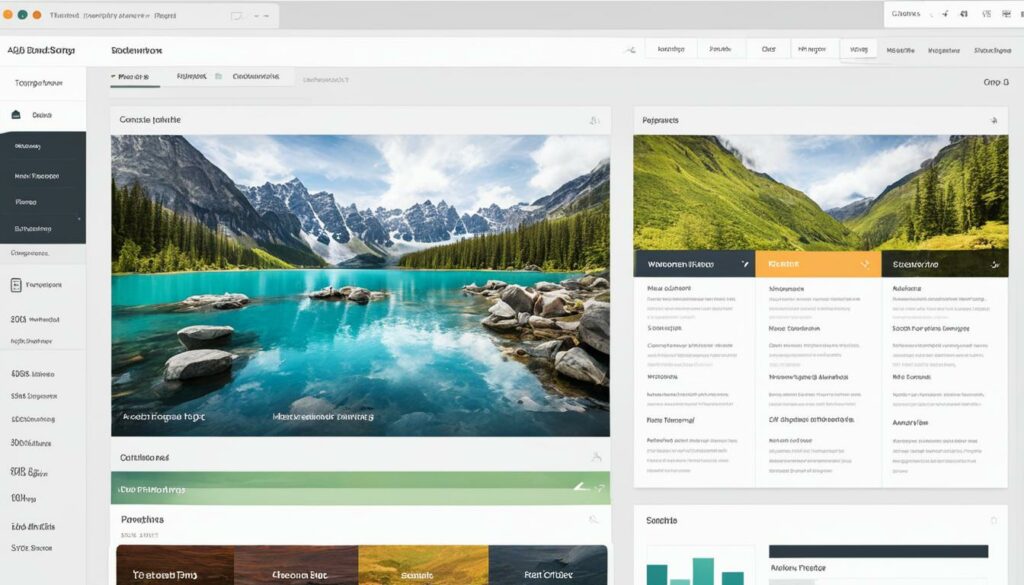Welcome to the world of sustainable web hosting! Did you know that the internet and the data centers that power it contribute to 2% of global greenhouse gas emissions? That’s equivalent to the entire country of Germany! Each time a web page is accessed, it emits CO2, adding to the environmental impact. But don’t worry, there are steps you can take to make your web hosting more sustainable and eco-friendly.
Optimizing your website for sustainability not only reduces its carbon footprint but also improves its performance and user experience. By implementing green hosting solutions and environmentally-friendly practices, you can contribute to a greener internet while still providing top-notch service to your audience.
Key Takeaways:
- Web hosting contributes to global greenhouse gas emissions.
- Optimizing images and videos reduces energy consumption.
- Lazy loading and web caching improve website performance and save energy.
- Choosing a green web host using renewable energy is essential for sustainable web hosting.
- By adopting sustainable practices, you can make a positive impact on the environment.
The Importance of Optimizing Images
When it comes to creating an eco-friendly website, optimizing images is a crucial step. High-resolution images not only slow down website loading times but also increase energy consumption. Finding the right balance between image quality and file size reduction can significantly improve your website’s performance while reducing its environmental impact.
By only including images that are necessary and making adjustments to their resolution and image quality, you can effectively optimize images. This not only ensures faster loading times but also reduces the carbon footprint associated with image rendering. To further compress images and minimize their file size, tools like TinyPNG or WP Smush Pro can be utilized before uploading them to your site.
Take a look at the following table for a clear comparison of the benefits of image optimization and file size reduction:
| Image Optimization Benefits | File Size Reduction Impact |
|---|---|
| Improved website performance | Decreased page loading times |
| Reduced energy consumption | Lower carbon footprint |
| Enhanced user experience | Decreased bandwidth usage |
By optimizing your site’s images, you can create a more energy-efficient and eco-friendly web design. Not only will it benefit the environment, but it will also provide a better experience for your users. So, don’t underestimate the impact of image optimization in making your website greener. Let’s take a step towards a sustainable online presence!
Strategic Use of Videos
Videos are a compelling way to engage your website visitors. However, it’s important to consider the impact they have on website performance and energy consumption. By optimizing your videos and being strategic with their usage, you can create an energy-efficient and environmentally friendly website.
Here are some tips to optimize your videos:
- Limit the number of videos on your site to only what is necessary. By reducing the number of videos, you can minimize the energy consumption associated with video rendering.
- Use the lowest possible resolution for your videos. Lower resolution videos have smaller file sizes, resulting in faster loading times and reduced energy consumption.
- Avoid autoplaying videos. Autoplaying videos consume additional energy and can negatively impact website performance. Let the user decide when to play the video.
- Consider if a video background is truly necessary for your site. Video backgrounds often require more energy to display and can significantly increase the energy requirements of your website. Use them sparingly and only when they add significant value to your site.

By following these strategies, you can optimize your videos for energy efficiency and create a more sustainable website. Remember, being mindful of video optimization contributes to a greener internet and improves the overall user experience.
The Benefits of Lazy Loading
Lazy loading is a powerful technique that offers numerous benefits, making it a valuable tool for creating energy-efficient websites with faster loading times. By implementing lazy loading, unnecessary images and media that would consume energy are deferred until they are needed, resulting in significant energy savings and improved website performance.
When a webpage is loaded, lazy loading ensures that only the visible content is loaded initially. As the user scrolls down the page, additional media, such as images or videos, are loaded dynamically. This approach reduces the initial load time of the webpage, as resources are loaded progressively, rather than all at once.
The advantages of lazy loading extend beyond faster loading times. By deferring the loading of images and media until they are actually needed, websites can conserve energy. Unnecessary content that would have otherwise consumed energy is effectively postponed, reducing the overall energy consumption of the website. This makes lazy loading an eco-friendly solution for optimizing website performance.
Furthermore, lazy loading improves the user experience. Visitors to your site will no longer have to wait for a large number of images or media files to load before accessing the desired content. They can begin browsing the webpage immediately, and as they scroll down, the additional media will load seamlessly. This enhances user engagement and satisfaction, while also reducing the risk of users abandoning the site due to slow loading times.
To implement lazy loading, you can utilize a variety of JavaScript libraries and plugins that simplify the process. These tools allow you to incorporate lazy loading functionality into your website effortlessly. By taking advantage of these tools, you can optimize your site’s performance, create an energy-efficient website, and provide an exceptional user experience.
Benefits of Lazy Loading:
- Reduced initial load time of webpages
- Lower energy consumption
- Faster loading times
- Enhanced user experience

“Lazy loading is an efficient technique that not only improves website performance but also reduces the energy consumed during the page loading process.”
The Role of Web Caching
Web caching plays a crucial role in creating energy-efficient websites while enhancing their overall performance. By implementing web caching, websites can significantly reduce their environmental impact and provide users with a faster and more efficient browsing experience.
Web caching involves the process of downloading and storing shared page elements closer to the user. This allows for a quicker retrieval of data without the need to repeatedly query the web server. By caching frequently accessed resources, such as images, scripts, and stylesheets, websites can minimize the transfer of data and decrease the energy consumption associated with data retrieval.
Not only does web caching result in improved website performance, but it also contributes to a reduction in energy consumption. By reducing the number of server requests and data transfers, web caching minimizes the carbon footprint of websites, making them more environmentally friendly.
To implement web caching, developers can utilize various caching techniques, such as browser caching and server-side caching. Browser caching involves specifying caching instructions in the website’s HTTP headers, allowing browsers to store and reuse certain elements. Server-side caching, on the other hand, involves caching dynamic content on the server level, further enhancing website performance and reducing energy consumption.
By integrating web caching into website development practices, businesses and individuals can create energy-efficient websites that deliver an improved user experience while reducing their environmental impact.

| Benefits of Web Caching: |
|---|
| Improved website performance |
| Reduced energy consumption |
| Enhanced user experience |
| Decreased server load |
Conclusion
Sustainable web hosting is essential for reducing the environmental impact of websites. By implementing best practices like optimizing images, using videos strategically, lazy loading, web caching, and improving site navigation, you can make your website more energy-efficient and eco-friendly. Additionally, choosing a green web host that relies on renewable energy sources further enhances the sustainability of your website.
By following these practices, you not only contribute to a greener and more sustainable internet but also improve the performance and user experience of your website. Optimizing images and reducing their file size not only speeds up page load times but also reduces energy consumption during image rendering. Similarly, being strategic with video usage and limiting autoplay can minimize the negative impact on website performance and energy consumption.
Implementing lazy loading and web caching techniques defers the loading of unnecessary images and media, resulting in lower energy consumption and faster loading times. Furthermore, by improving site navigation and deleting unnecessary elements, you create a more efficient browsing experience for visitors, reducing their waiting time and the energy required to power your website.
To make a significant impact and promote a sustainable web hosting ecosystem, it’s crucial for website owners to adopt these practices and choose environmentally friendly hosting solutions. By doing so, you contribute to creating a more environmentally conscious internet and help build a greener future for our planet.
FAQ
Q: How does web hosting contribute to greenhouse gas emissions?
A: The internet and the data centers that power it contribute to 2% of global greenhouse gas emissions, equivalent to the entire country of Germany.
Q: How can I make web hosting more sustainable?
A: There are several ways to make web hosting more sustainable, such as optimizing images, strategic use of videos, lazy loading for images and media, setting up web caching, deleting unnecessary elements, and improving site navigation.
Q: Why is image optimization important for a sustainable website?
A: High-resolution images can significantly slow down website loading times and increase energy consumption. Optimizing images by reducing their file size and resolution not only improves website performance but also reduces the carbon footprint associated with image rendering.
Q: How can I optimize images for my website?
A: To optimize images, only include necessary images, reduce their resolution and image quality. Tools like TinyPNG or WP Smush Pro can further compress images before uploading them to the site.
Q: How does strategic use of videos contribute to a sustainable website?
A: While videos can be engaging, they also have a negative impact on website performance and energy consumption. By limiting the number of videos, using the lowest possible resolution, and avoiding autoplaying videos, you can minimize the environmental impact.
Q: What is lazy loading, and how does it benefit the environment?
A: Lazy loading is a technique that loads images and media only when they are needed, reducing the initial load time of a webpage. By implementing lazy loading, unnecessary images and media that would consume energy are deferred until a user scrolls down to see them, resulting in lower energy consumption and faster loading times.
Q: How does web caching contribute to energy efficiency in web hosting?
A: Web caching involves downloading shared page elements and storing them closer to the user, reducing the need to query the web server for the same data. This improves website performance and minimizes the transfer of data, resulting in lower energy consumption and a more efficient user experience.
Q: Why is sustainable web hosting important?
A: Sustainable web hosting plays a crucial role in reducing the environmental impact of websites. By following best practices and choosing green web hosting providers that use renewable energy, website owners can make their sites more energy-efficient and environmentally friendly.












